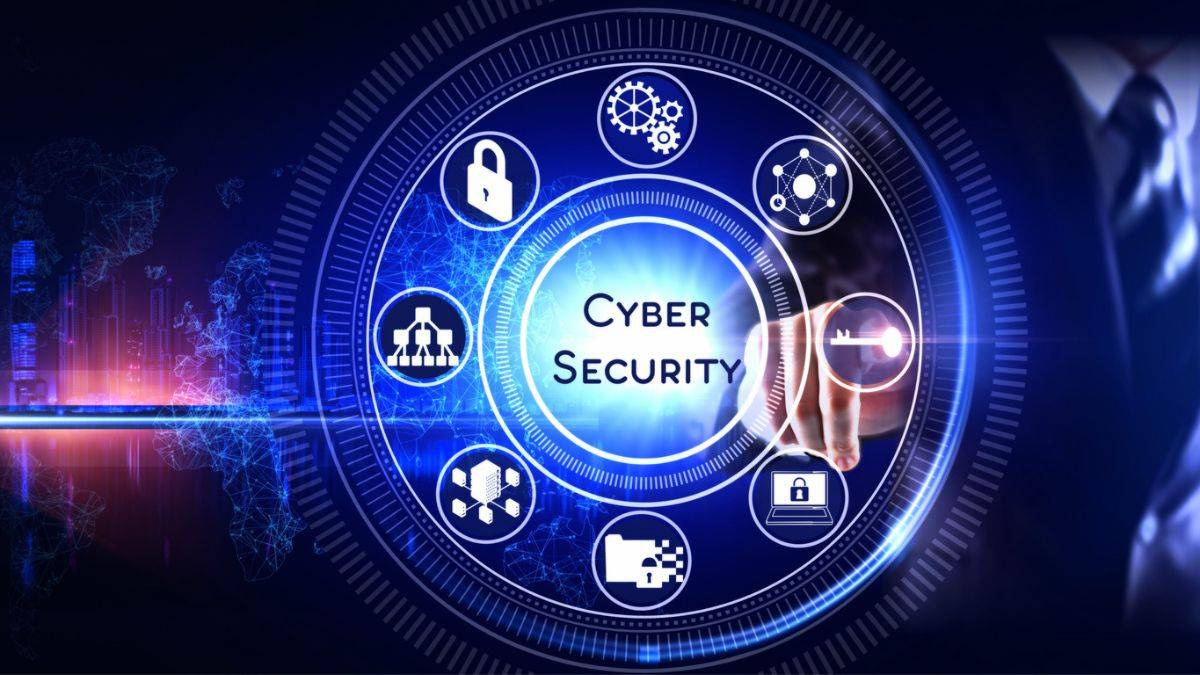



Incident Response Services
ABOUT US
Explore the forefront of cybersecurity with our comprehensive incident response services. From expert incident response to specialized data breach services, we ensure your business stays secure. Discover leading incident response companies dedicated to safeguarding your technology infrastructure.
CONTACT US
FIRST NAME
LAST NAME
EMAIL
WRITE UR MESSAGE
SEND
BLOG POST
The Evolution of Incident Response in the Tech Industry

Incident response (IR) in the tech industry has evolved significantly over the years, driven by the relentless growth of digital technologies and the increasing sophistication of cyber threats. What began as reactive measures to address security breaches has transformed into a proactive and strategic approach to cyber defense. This article explores the evolution of incident response within the tech industry, highlighting key milestones, emerging trends, and the critical role of IR in safeguarding organizations against modern cyber threats.
Early Stages: Reactive Incident Management
In the early days of the tech industry, incident response primarily focused on reacting to security breaches after they occurred. Organizations typically lacked formalized IR plans and dedicated teams, often relying on ad hoc responses to mitigate damage and restore operations. The emphasis was on containment and recovery rather than proactive threat detection and prevention.
Transition to Proactive Incident Detection
As cyber threats became more prevalent and sophisticated, the tech industry recognized the need for proactive incident detection capabilities. Organizations started investing in technologies such as intrusion detection systems (IDS), security information and event management (SIEM) platforms, and endpoint detection and response (EDR) tools. These technologies enabled early detection of suspicious activities, anomalies, and potential security incidents before they could escalate into full-blown breaches.
Integration of Incident Response into Cyber Security Strategies
In response to the evolving threat landscape, incident response began to be integrated into broader cyber security strategies. Organizations adopted a holistic approach to cyber defense, where incident response played a crucial role alongside preventive measures, threat intelligence, and continuous monitoring. Incident response teams were formalized, with defined roles, responsibilities, and incident response plans (IRPs) designed to guide coordinated responses to security incidents.
Shift towards Proactive Threat Hunting and Response Automation
With the rise of advanced persistent threats (APTs) and sophisticated attack techniques, incident response evolved further to include proactive threat hunting and response automation. Threat hunting involves actively searching for indicators of compromise (IOCs) and potential threats within organizational networks, often using advanced analytics and machine learning algorithms. Automation tools and playbooks were introduced to streamline incident response processes, enabling faster response times and more consistent actions.
The Role of Incident Response in Compliance and Regulatory Requirements
In recent years, incident response has also become integral to compliance with regulatory requirements and data protection laws. Regulations such as GDPR, CCPA, and others mandate organizations to implement robust incident response capabilities, including timely breach notifications and data breach management procedures. Incident response teams collaborate closely with legal and compliance departments to ensure adherence to regulatory standards and minimize legal liabilities. Click here incident response services
Future Trends and Innovations in Incident Response
Looking ahead, incident response in the tech industry is expected to continue evolving in response to emerging threats and technological advancements. Key trends include:
- AI and Machine Learning: Leveraging AI-driven analytics to enhance threat detection and response capabilities.
- Cloud Security: Addressing challenges related to incident response in cloud environments and hybrid infrastructures.
- Integration with DevOps: Incorporating incident response into DevOps practices to ensure security and resilience in agile development environments.
- Cyber Threat Intelligence: Enhancing incident response strategies with real-time threat intelligence and collaborative information sharing.
Conclusion
The evolution of incident response in the tech industry reflects a paradigm shift from reactive incident management to proactive cyber defense. By embracing technological advancements, adopting proactive detection strategies, and integrating incident response into broader cyber security frameworks, organizations can effectively mitigate cyber risks and safeguard their digital assets. As cyber threats continue to evolve, incident response will remain a cornerstone of resilient cyber security strategies, ensuring organizations can detect, respond to, and recover from security incidents swiftly and effectively in an increasingly interconnected digital landscape.
How Incident Response Services Can Save Your Business

In today's digital age, the threat landscape facing businesses is more complex and dynamic than ever before. Cyber attacks, data breaches, and security incidents pose significant risks to organizational operations, finances, and reputation. Incident response services offer a vital lifeline for businesses, providing proactive measures and swift responses to mitigate these risks and safeguard business continuity. This article explores the essential role of incident response services in protecting businesses from cyber threats and how they can ultimately save your organization from potential devastation.
Understanding Incident Response Services
Overview: Incident response services encompass a range of specialized strategies, methodologies, and resources designed to help organizations prepare for, detect, respond to, and recover from cyber security incidents. These services are delivered by skilled professionals who specialize in cyber incident management, forensic analysis, and threat mitigation. Make more details about incident response companies
Key Objectives:
- Early Detection: Implement proactive monitoring and threat detection mechanisms to identify security incidents and breaches promptly.
- Effective Response: Coordinate rapid response actions to contain, mitigate, and recover from incidents, minimizing operational disruption and data loss.
- Forensic Analysis: Conduct thorough investigations to determine the root cause of incidents, assess the impact, and implement measures to prevent future occurrences.
Benefits of Incident Response Services
- Rapid Incident Response: Incident response services enable organizations to respond swiftly to cyber security incidents, minimizing the time attackers have to exploit vulnerabilities and reducing the overall impact on business operations.
- Mitigation of Financial Losses: By containing incidents promptly and restoring normal operations quickly, incident response services help mitigate financial losses associated with downtime, data loss, and potential regulatory fines.
- Protection of Reputation and Customer Trust: Timely and effective incident response demonstrates proactive efforts to protect sensitive data and maintain customer trust, thereby preserving organizational reputation.
- Compliance with Regulatory Requirements: Incident response services assist businesses in complying with data protection regulations and incident reporting requirements, ensuring adherence to legal obligations and minimizing legal liabilities.
Components of Effective Incident Response Services
1. Incident Preparedness:
- Develop and maintain incident response plans (IRPs) tailored to organizational needs and regulatory requirements.
- Conduct regular training and simulations to prepare staff for responding to various types of cyber incidents.
2. Proactive Monitoring and Detection:
- Implement continuous monitoring of networks, systems, and endpoints to detect and alert on suspicious activities and potential security breaches.
- Utilize advanced threat detection technologies and security analytics to identify indicators of compromise (IOCs) and emerging threats.
3. Rapid Response and Containment:
- Establish predefined response protocols and escalation procedures to enable rapid containment and mitigation of security incidents.
- Deploy incident response teams equipped with the necessary tools and resources to coordinate effective response efforts.
4. Forensic Analysis and Remediation:
- Conduct detailed forensic investigations to analyze the scope and impact of security incidents, identify vulnerabilities, and implement remediation measures.
- Restore affected systems and data from backups while ensuring strengthened security measures to prevent future incidents.
Case Studies and Success Stories
Numerous organizations across industries have benefited from incident response services, saving their businesses from potentially catastrophic cyber incidents. Examples include:
- Retail Sector: Rapid containment of a ransomware attack prevented widespread disruption to customer transactions and restored operational continuity within hours.
- Financial Services: Timely detection and response to a data breach protected sensitive customer financial information, preserving trust and compliance with regulatory requirements.
- Healthcare Industry: Proactive incident response prevented unauthorized access to patient records, ensuring confidentiality and maintaining healthcare service delivery.
Conclusion
Incident response services serve as a critical line of defense for businesses navigating the increasingly complex cyber threat landscape. By investing in proactive incident detection, rapid response capabilities, and comprehensive incident management strategies, organizations can effectively safeguard their operations, finances, and reputation from cyber security incidents. The proactive approach of incident response services not only mitigates risks and minimizes potential damages but also demonstrates a commitment to protecting sensitive data and maintaining trust with customers and stakeholders. Embracing incident response services is not just a prudent business decision but a crucial investment in the resilience and longevity of your organization in today's digital economy.